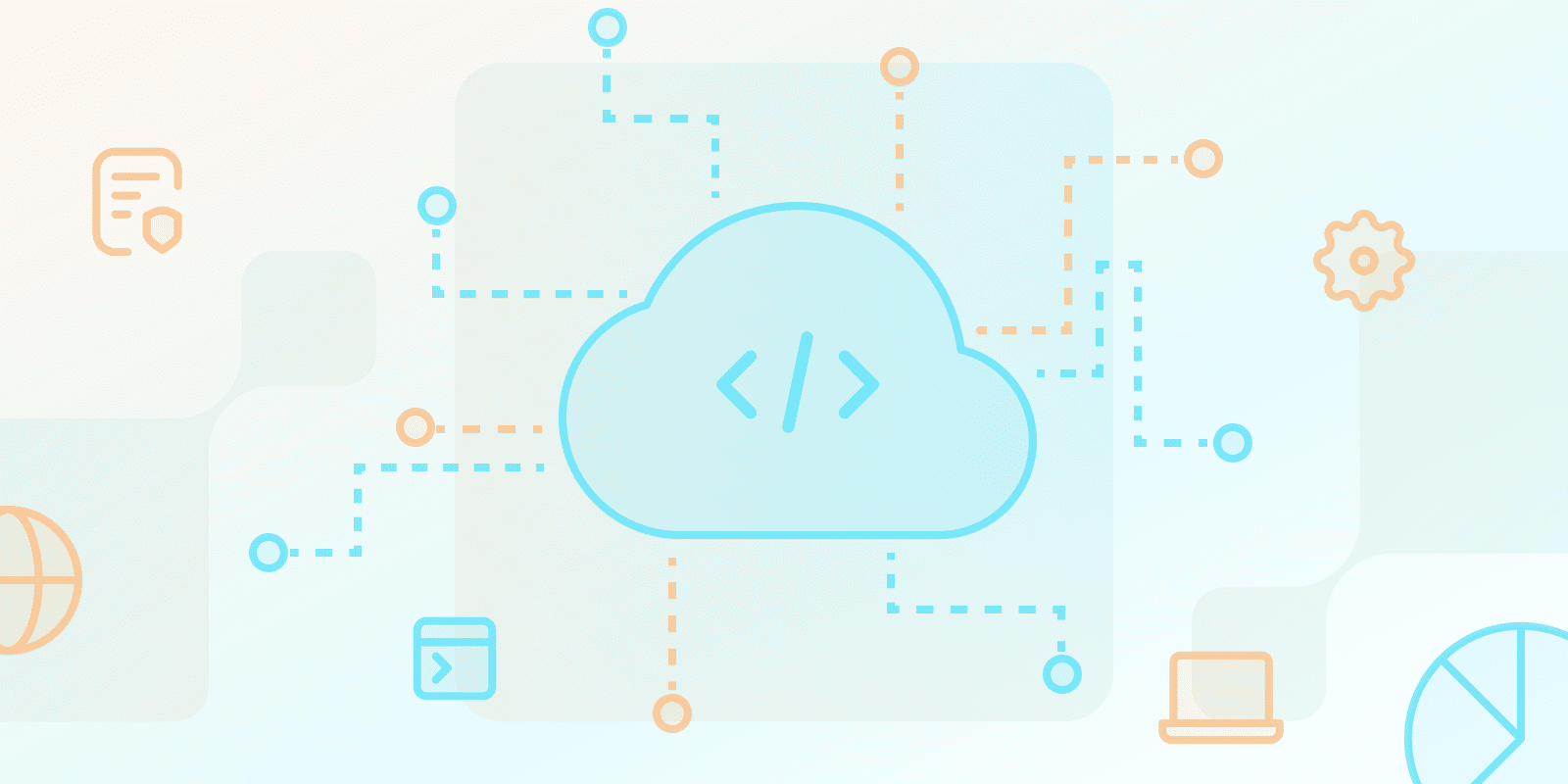サーバーレスコンピューティング
サーバーレスコンピューティングとは?

サーバーレスコンピューティングとは?
サーバーレスコンピューティングは、サーバー、オペレーティングシステム、または物理インフラストラクチャを扱うことなく、アプリケーションとサービスの作成と展開を可能にするクラウドコンピューティングモデルです。
オンデマンドベースで展開され、リソースは需要に応じて消費者に提供され、消費者は使用量に応じて支払います。サーバーレスコンピューティングは、開発者の焦点をインフラストラクチャ管理からコーディングに移し、俊敏性と開発サイクルをサポートします。
また、サーバーレスコンピューティングでは、インフラストラクチャ管理の役割がユーザーからプロバイダーに移行することに注意することが重要です。
サーバーレスコンピューティングの種類は何ですか?
リソースを割り当てるために使用されるイベントに基づいて、サーバーレスコンピューティングを分類する方法は異なります。この理解は、さまざまな状況に適したタイプのサーバーレスアーキテクチャを決定し、リソースを管理する能力を向上させるのに役立ちます。
- データ処理イベント: これらは、新しいデータを受信したとき、または特定のデータ処理が必要なときにサーバーレス関数を開始します。リアルタイム分析アプリケーションで優先的に使用されます。
- データベースの変更: これらのサーバーレス関数は、データベースの変更に応答します。
- クラウドストレージイベント: ファイルのアップロードまたはクラウドストレージの変更によって開始されるこれらのイベントは、アップロードされたデータの処理やワークフローの実行に最適です。
- IoTイベント: サーバーレス機能は、IoTデバイスに一般的に関連する断続的なデータと応答時間を実行するのに理想的です。
サーバーレス技術を使用する利点は何ですか?
- コスト効率: サーバーレスは従量課金制で動作し、実際の関数の実行時間に基づいて課金されます。
- 開発者の効率性: 開発者は、サーバー管理を専門組織に任せることで、効率的にコードを書くことに集中できます。
- 自動スケーラビリティ: サーバーレスプラットフォームは、アプリケーションの配信とスケーラビリティを管理します。
- 加速されたイノベーション: イノベーションや実験をスピードアップするために、組織はサーバーレスコンピューティングを採用できます。
- サーバーレス実装: サーバーレスコンピューティングにより、プログラマーはサーバーやインフラストラクチャを管理せずにアプリケーションを構築して実行できます。
サーバーレスコンピューティングは従来のホスティングとどのように比較されますか?
サーバーレスコンピューティングは、従来のホスティングとは大きく異なるモデルです。サーバーレスアーキテクチャには、柔軟性、費用対効果、および 弾力性 サーバー管理とは対照的に。
サーバーレスコンピューティングでは、従来のサーバーや VMS とは異なり、基盤となる構造の全体的な管理を最小限に抑えても良好に動作するアプリケーションを構築できます。
開発チームがサーバー容量を事前に購入する従来の構成とは異なり、サーバーレスアーキテクチャは 自動スケーリング.
考えられる違いの 1 つは、サーバーレス環境でのデバッグとエラー処理は、従来のホスト型アプリケーションよりも複雑になる可能性があることです。
サーバーレスコンピューティングが自分のアプリケーションに適しているかどうかはどうすればわかりますか?
サーバーレスコンピューティングには長所と短所があります。アプリケーションのトラフィックまたは処理負荷が時間とともに変化し、時折集中的な処理が必要な場合に適しています。
アプリケーションにリアルタイムストリーミングが含まれ、最小限の遅延と最大のスループットが望ましい場合、サーバーレスが最善の選択肢です。ただし、より決定的なタイプのワークロードの場合、コンテナの方が適している可能性があります。
サーバーレスの主な利点の 1 つは、アクセス頻度が低い場合に段階的にスケーリングされるのに対し、コンテナは手動スケーリングに基づいています。たとえば、サーバーレス関数は、Web サイトへのトラフィックの急増などの単発イベントを管理するアプリケーションに最適です。
開発者はフレームワークを拡張するために介入する必要はありません。モノリシックアプリケーションは、ある程度の期間にわたるトラフィックの段階的な増加に対処できますが、コンテナ化されたアプリケーションを使用すると、eコマースプラットフォームはより効果的になります。
| 機能 | サーバーレスコンピューティング | 従来のホスティング/コンテナ |
|---|---|---|
| スケーリング特性 | ||
| スケーリングアプローチ | アクセス頻度の低い場合の自動的かつ段階的なスケーリング | 手動スケーリング、事前設定された容量 |
| 最適なユースケース | 変動トラフィック、時折発生する集中処理 | 一貫性のある予測可能なワークロード |
| パフォーマンス特性 | ||
| レイテンシ | コールドスタートによる遅延の可能性 | より安定したレスポンスタイム |
| 理想的なシナリオ | リアルタイムストリーミング、最小レイテンシ | 確定的なワークロード、eコマースプラットフォーム |
| 管理と柔軟性 | ||
| インフラストラクチャ管理 | プロバイダーがスケーリングとインフラストラクチャを管理 | 開発チームがサーバー容量を管理 |
| デバッグ | より困難、制限された環境アクセス | より簡単、直接的なコード反映 |
スケーラビリティのニーズ、開発レベル、コストなどの要因を分析して、最も適切なオプションを選択する必要があります。
サーバーレスコンピューティングの課題と制限は何ですか?
サーバーレスコンピューティングはいくつかの新しい機会をもたらしますが、多くの課題と制限も伴います。
- 呼び出しレイテンシーの一形態はコールドスタートで、操作がしばらく使用されていないと応答に時間がかかります。
- ベンダーロックイン、主に処理がクラウドプロバイダーによって提供される特定のツールとサービスに委任されているため、他のプロバイダーへの切り替えプロセスに関して要求が厳しい場合があります。
- サーバーレス環境でのデバッグは、プログラミング環境への物理的なアクセスがなく、コードに直接反映されないため、困難です。
結論
サーバーレスコンピューティングは、アプリケーション開発プロセスのためのクラウドコンピューティングモデルです。サーバーレスコンピューティング、そのカテゴリの違い、従来のホスティングよりも優れている理由、最適な場所を完全に理解する必要があります。